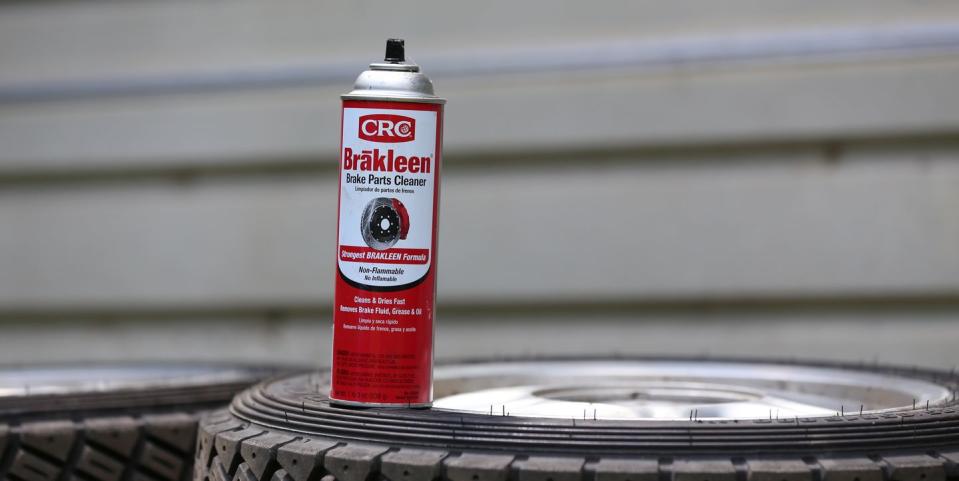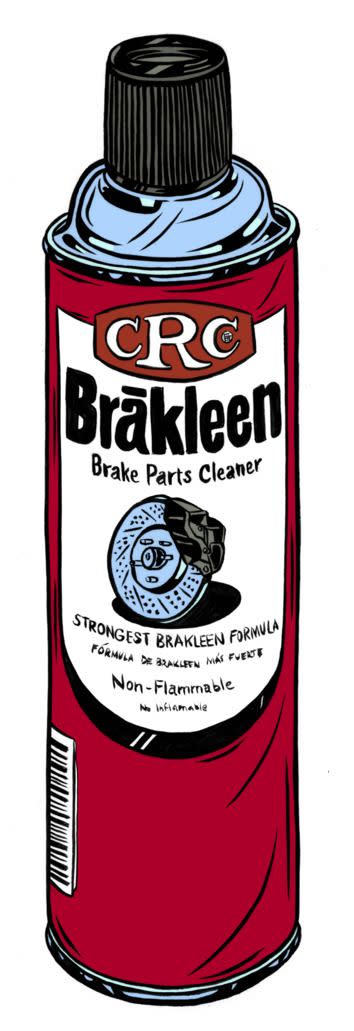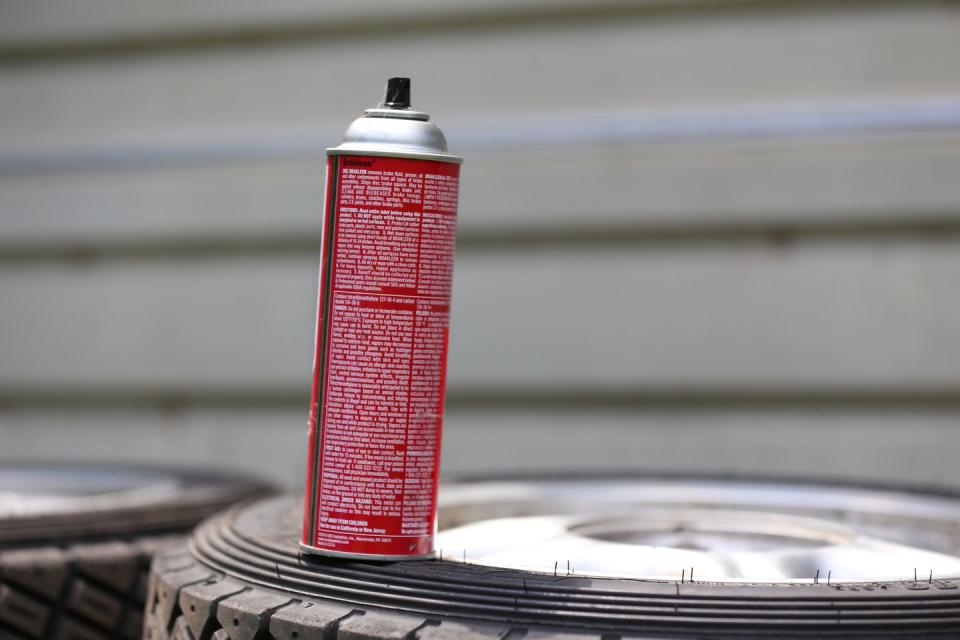Don't Use Brakleen to Clean Everything in Your Shop

At my first (and last) real auto-shop job, our lead mechanic unleashed Brakleen on everything. Cleaning oil off the shop floor? Brakleen. Pulling road grime off the bottom of a car? Brakleen. Dirty plates after dinner? Brakleen. Wait, no. Don’t do that.
This story originally appeared in the August 2020 issue of Road & Track.
CRC Industries trademarked Brakleen in 1971. Sold in aerosol cans at the consumer level, it’s primarily composed of tetrachloroethylene (PERC). If the chemical sounds familiar, it should. It’s widely used in the dry- cleaning industry. While PERC is an extremely capable industrial cleaner, it’s very bad for you. So bad the United States Environmental Protection Agency (EPA) classifies it as “likely to be carcinogenic in humans by all routes of exposure.”

Brakleen is beloved by many mechanics and project-car lovers, of course. And it’s used for far more than just cleaning brakes. I asked an online group of mechanics how they used Brakleen beyond brake jobs. I received more than 300 replies. Mechanics, both amateur and professional, say they use it for cleaning oil messes in their shops, breaking down clothing stains, and killing insects. A few even joked it’s effective at finding cuts (please, don’t try that at home).
Chris Reddy, an environmental chemist who studies petroleum geochemistry and marine pollution, and has experience analyzing PERC, helped explain why Brakleen is so effective.
“It has a great affinity for dissolving a wide range of different greases and oils,” Reddy said. “It’s not surprising that this is being embraced [by mechanics]—it’s been embraced by other industries ... because it has a great capacity to dissolve and remove unwanted materials from a piece of metal.”
Reddy explained that if you have the ability to choose a different cleaner, you really should.
“I’m kind of surprised it’s still being sold. It’s a pretty potent chemical....It’s not worth using because there are other formulations that are less potentially harmful. That’s what they did with the non-chlorinated formula.”
Unfortunately, the non-chlorinated formula, a mixture primarily made of acetone and heptane, isn’t nearly as strong as the PERC version. The red can is the common favorite among consumers, except for where it’s not allowed to be sold: New Jersey and California.
“My gut feeling is, if you ask the old-timers, they’d probably say ‘it ain’t like it used to be.’ ... The one with PERC in it would be superior,” Reddy said.
Chlorinated Brakleen is even more dangerous for welders. When heated to high temperatures, the cleaner can release toxic gases like hydrogen chloride and phosgene, according to a Popular Science article from 2009. That article referenced a story in American Iron Magazine where a welder working on semis “came close to a small puff of white smoke and immediately almost passed out” while welding Brakleen- coated materials. Feeling exhausted and sick, the welder Steve Garn was later admitted to an intensive care unit.
Garn suffered from a low oxygen count and experienced general fatigue for over a year afterward. Unsurprisingly, he no longer uses chlorinated Brakleen.
“If I get near [chlorinated Brakleen] I get very nauseous. I use non- chlorinated instead,” Garn said. In retelling the episode, Garn stresses a new mantra: read safety labels in full.

Of course, CRC’s cleaner probably isn’t the most dangerous tool in your average auto shop. At least, not when used responsibly as brake cleaner. But for those of us using this stuff to clean upholstery, wipe down welding materials, and take out wasps, it might be time to find a new weapon of choice.
You Might Also Like

 Yahoo Autos
Yahoo Autos 